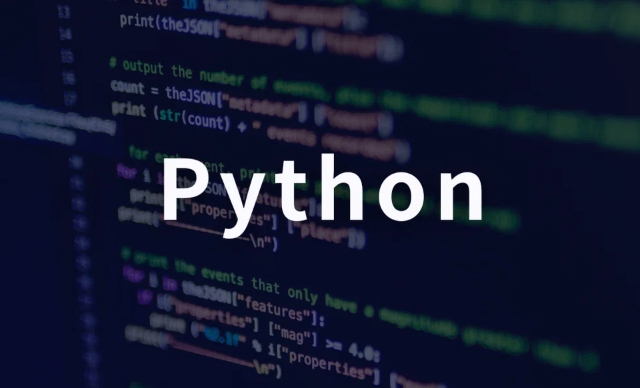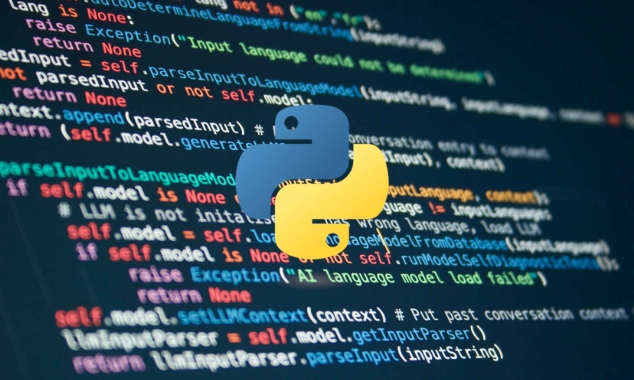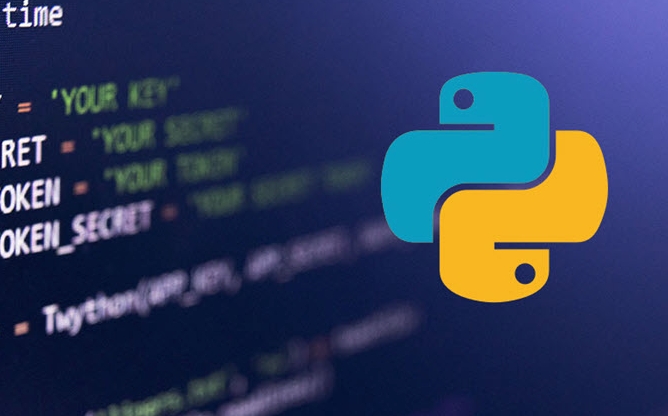 Backend Development
Backend Development
 Python Tutorial
Python Tutorial
 What is a forward reference in Python type hints for classes?
What is a forward reference in Python type hints for classes?
What is a forward reference in Python type hints for classes?
Jul 09, 2025 am 01:46 AMForward references in Python allow referencing classes that are not yet defined by using quoted type names. They solve the issue of mutual class references like User and Profile where one class is not yet defined when referenced. By enclosing the class name in quotes (e.g., 'Profile'), Python delays resolving the reference until it's needed. This technique should only be used when necessary, such as in circular dependencies, and can also be applied in function signatures. Starting from Python 3.11 or with from __future__ import annotations, quotes are unnecessary. Common mistakes include typos in quoted names, overuse, and not defining the referenced class later. Using tools like mypy helps ensure correctness.

When you're working with type hints in Python, especially when dealing with classes that reference each other, you might run into a problem: one class refers to another that hasn't been defined yet. That's where a forward reference comes in.

A forward reference is basically a way to tell Python, "This type will exist later, so don’t worry about it right now." You do this by putting the type name in quotes, like 'ClassName', instead of using it directly.
Why you need forward references
Let’s say you have two classes that refer to each other — for example, User and Profile. In Python, code runs top to bottom. So if User has a field that refers to Profile, and Profile also has a field that refers back to User, you’ll hit an error if you try to use the class name directly before it's defined.

Here’s what that looks like without quotes (and would cause a NameError):
class User:
profile: Profile # Error! Profile isn't defined yet
class Profile:
user: UserBy using a string instead, like 'Profile', you avoid that issue:

class User:
profile: 'Profile' # This works!
class Profile:
user: UserPython understands that 'Profile' is a type that will be defined later.
How to use them correctly
Using forward references is straightforward — just wrap the class name in quotes. But there are a few things to keep in mind:
- Only use them when necessary, like when two classes depend on each other.
- If the class is already defined above, no need for quotes.
- They work not just in class attributes, but also in function signatures and return types.
Examples:
def get_user() -> 'User':
...
class User:
friend: 'User' # Refers to same classAlso, starting from Python 3.11 (or using from __future__ import annotations in Python 3.7 ), you can skip the quotes entirely because annotations are automatically treated as forward references. But if you’re supporting older versions or writing code that needs to run across multiple Python versions, using quotes is still safer.
Common mistakes and how to avoid them
Sometimes people forget that forward references are only placeholders. Here are a few gotchas:
- ? Using invalid class names inside quotes — Python won't catch typos until runtime.
- ? Forgetting to define the actual class later — your code will crash when it tries to resolve the reference.
- ? Overusing them even when the class is already defined — it's unnecessary and can confuse readers.
If you're using tools like mypy or Pyright for static typing, they usually handle quoted references well, but it’s good to test with your own setup.
So, to sum up:
- Use
'ClassName'when a class hasn't been defined yet - Don’t quote class names once both are defined in the right order
- Know your Python version and tooling support
基本上就這些。
The above is the detailed content of What is a forward reference in Python type hints for classes?. For more information, please follow other related articles on the PHP Chinese website!

Hot AI Tools

Undress AI Tool
Undress images for free

Undresser.AI Undress
AI-powered app for creating realistic nude photos

AI Clothes Remover
Online AI tool for removing clothes from photos.

Clothoff.io
AI clothes remover

Video Face Swap
Swap faces in any video effortlessly with our completely free AI face swap tool!

Hot Article

Hot Tools

Notepad++7.3.1
Easy-to-use and free code editor

SublimeText3 Chinese version
Chinese version, very easy to use

Zend Studio 13.0.1
Powerful PHP integrated development environment

Dreamweaver CS6
Visual web development tools

SublimeText3 Mac version
God-level code editing software (SublimeText3)

Hot Topics
 Polymorphism in python classes
Jul 05, 2025 am 02:58 AM
Polymorphism in python classes
Jul 05, 2025 am 02:58 AM
Polymorphism is a core concept in Python object-oriented programming, referring to "one interface, multiple implementations", allowing for unified processing of different types of objects. 1. Polymorphism is implemented through method rewriting. Subclasses can redefine parent class methods. For example, the spoke() method of Animal class has different implementations in Dog and Cat subclasses. 2. The practical uses of polymorphism include simplifying the code structure and enhancing scalability, such as calling the draw() method uniformly in the graphical drawing program, or handling the common behavior of different characters in game development. 3. Python implementation polymorphism needs to satisfy: the parent class defines a method, and the child class overrides the method, but does not require inheritance of the same parent class. As long as the object implements the same method, this is called the "duck type". 4. Things to note include the maintenance
 Explain Python generators and iterators.
Jul 05, 2025 am 02:55 AM
Explain Python generators and iterators.
Jul 05, 2025 am 02:55 AM
Iterators are objects that implement __iter__() and __next__() methods. The generator is a simplified version of iterators, which automatically implement these methods through the yield keyword. 1. The iterator returns an element every time he calls next() and throws a StopIteration exception when there are no more elements. 2. The generator uses function definition to generate data on demand, saving memory and supporting infinite sequences. 3. Use iterators when processing existing sets, use a generator when dynamically generating big data or lazy evaluation, such as loading line by line when reading large files. Note: Iterable objects such as lists are not iterators. They need to be recreated after the iterator reaches its end, and the generator can only traverse it once.
 How to iterate over two lists at once Python
Jul 09, 2025 am 01:13 AM
How to iterate over two lists at once Python
Jul 09, 2025 am 01:13 AM
A common method to traverse two lists simultaneously in Python is to use the zip() function, which will pair multiple lists in order and be the shortest; if the list length is inconsistent, you can use itertools.zip_longest() to be the longest and fill in the missing values; combined with enumerate(), you can get the index at the same time. 1.zip() is concise and practical, suitable for paired data iteration; 2.zip_longest() can fill in the default value when dealing with inconsistent lengths; 3.enumerate(zip()) can obtain indexes during traversal, meeting the needs of a variety of complex scenarios.
 What are Python type hints?
Jul 07, 2025 am 02:55 AM
What are Python type hints?
Jul 07, 2025 am 02:55 AM
TypehintsinPythonsolvetheproblemofambiguityandpotentialbugsindynamicallytypedcodebyallowingdeveloperstospecifyexpectedtypes.Theyenhancereadability,enableearlybugdetection,andimprovetoolingsupport.Typehintsareaddedusingacolon(:)forvariablesandparamete
 Explain Python assertions.
Jul 07, 2025 am 12:14 AM
Explain Python assertions.
Jul 07, 2025 am 12:14 AM
Assert is an assertion tool used in Python for debugging, and throws an AssertionError when the condition is not met. Its syntax is assert condition plus optional error information, which is suitable for internal logic verification such as parameter checking, status confirmation, etc., but cannot be used for security or user input checking, and should be used in conjunction with clear prompt information. It is only available for auxiliary debugging in the development stage rather than substituting exception handling.
 What are python iterators?
Jul 08, 2025 am 02:56 AM
What are python iterators?
Jul 08, 2025 am 02:56 AM
InPython,iteratorsareobjectsthatallowloopingthroughcollectionsbyimplementing__iter__()and__next__().1)Iteratorsworkviatheiteratorprotocol,using__iter__()toreturntheiteratorand__next__()toretrievethenextitemuntilStopIterationisraised.2)Aniterable(like
 How to make an object a generator in Python?
Jul 07, 2025 am 02:53 AM
How to make an object a generator in Python?
Jul 07, 2025 am 02:53 AM
To make an object a generator, you need to generate values ??on demand by defining a function containing yield, implementing iterable classes that implement \_\_iter\_ and \_next\_ methods, or using generator expressions. 1. Define a function containing yield, return the generator object when called and generate values ??successively; 2. Implement the \_\_iter\_\_ and \_\_next\_\_\_ in a custom class to control iterative logic; 3. Use generator expressions to quickly create a lightweight generator, suitable for simple transformations or filtering. These methods avoid loading all data into memory, thereby improving memory efficiency.
 How to call Python from C ?
Jul 08, 2025 am 12:40 AM
How to call Python from C ?
Jul 08, 2025 am 12:40 AM
To call Python code in C, you must first initialize the interpreter, and then you can achieve interaction by executing strings, files, or calling specific functions. 1. Initialize the interpreter with Py_Initialize() and close it with Py_Finalize(); 2. Execute string code or PyRun_SimpleFile with PyRun_SimpleFile; 3. Import modules through PyImport_ImportModule, get the function through PyObject_GetAttrString, construct parameters of Py_BuildValue, call the function and process return





